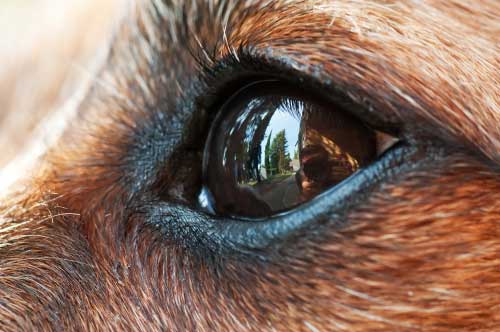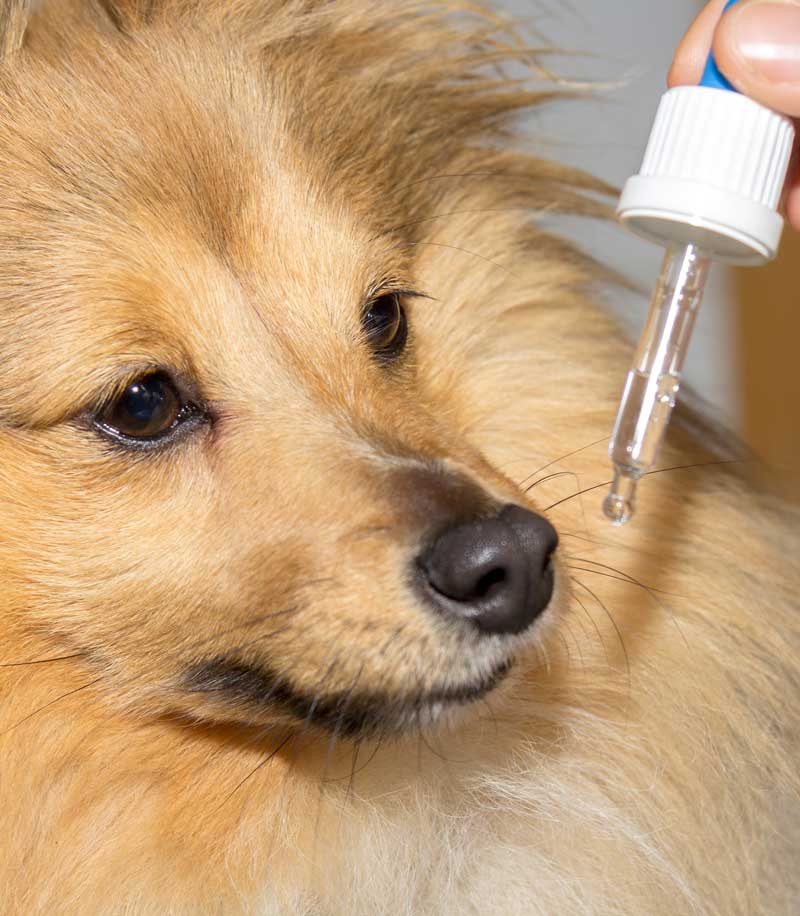It’s very important that you are keeping an eye on your dog’s eyes. Glaucoma is a condition in dogs where pressure is placed on the eye causing inadequate fluid drainage.
Glaucoma is a serious condition that can cause permanent blindness in dogs, if it is not treated or it becomes chronic, due to too much pressure on the optic nerve. Sadly, about 40% of dogs that suffer from glaucoma will become blind in the affected eye within the first year, even with treatment. Glaucoma is very painful and should be treated immediately upon diagnosis.
Different types of eye conditions in Dogs
Dogs suffering from glaucoma are not always completely blind. Some dogs may be only blind in one eye, partially blind or even intermittently blind. A partially blind dog can still see shapes and light while intermittently blind dogs have their vision come and go. Regardless of what type of blindness, however, the symptoms are still the same.
Ailment Guides:
Aggression In Dogs
Appetite Loss In Cats
Abdominal Pain In Dogs
Canine Eye Conditions
Causes of Glaucoma in Dogs?
Sometimes the diagnosis may have been made after serious damage has already been done and there is nothing that can be done.
Medication can be used to lower the pressure within your dogs eye which will help to relieve the pain and could save their vision. It is possible that surgery can help to repair the eye in some cases, however, you would have to check with your vet to know for sure.
Some dog breeds are more genetically predisposed to suffer from glaucoma such as, Chow Chows, Poodles and Cocker Spaniels. Cells inside a dogs eye produce a clear fluid called, aqueous humor that nourishes the tissues inside the eye. This liquid is not to be confused with the tears that are naturally produced on the outside of the eye.
Glaucoma is the increased pressure within the eyeball, referred to as intraocular pressure (IOP), that occurs when the aqueous humor fluid can’t be properly drained. Glaucoma is usually classified as primary or secondary in animals and can be caused by several different conditions.
Primary glaucoma is often inherited and commonly found in specific breeds such as shar pei, jack russell or shih tzu. It tends to start in one eye, but it will eventually affect both in time.
Secondary glaucoma occurs when another eye disease causes the intraocular pressure within the eye. Common causes of secondary glaucoma include cancer of the eye and advanced cataracts.
Signs and Symptoms of Glaucoma in Dogs
Pain is the most obvious sign of both primary and secondary glaucoma in dogs. Some additional signs to be aware of include:
- Sudden vision loss
- Constant blinking of the eye
- Redness of the eyeball
- Eyeball receding into the head
- Cloudy looking eyes
- Dilated pupil
- Enlargement of the eyeball
- Constriction of the pupil
If you dog is suffering from secondary glaucoma you may also notice your dog suffering from headaches, lethargy and a loss of appetite. You should consult your veterinarian if you notice one or a combination of these symptoms.
Treatments for canine glaucoma
Depending on the exact nature of the glaucoma, some veterinarians may drain the fluid from a dogs eye and stop it from producing aqueous humor fluid. This procedure is called Clocryotherapy and it uses cold temperatures to kill those cells that are producing the fluid. It can slow down and possibly stop the progression of glaucoma in dogs. Even if these treatments do work, regular trips to the veterinarian will be in order to monitor the pressure in your dog’s eyes.
Why CBD can be an Effective Treatment & Preventative for Glaucoma in Dogs
CBD – or Cannabidiol – can be very effective at supporting eye health.
Cannabidiol (CBD) can be very beneficial for maintaining your dog’s immune system, cardiovascular system and overall vitality. CBD helps to lessen the effects of lethargy, gastrointestinal issues and reduces anxiety, aggression and stress-related disorders.
Think of CBD as a supplement that can reduce the severity and frequency of most symptoms of cataracts and glaucoma. On the other hand, it is not specifically formulated to combat the degeneration of your dog’s vision. CBD acts as an immunity support, pain & inflammation remedy, and helps to prevent infections or tumors that might contribute to blindness.
Cannabidiol is a phytocannabinoid that has been shown to have a prominent effect on numerous ailments – including epilepsy, arthritis and cancer. Remedies containing CBD achieve this by interacting with your dog’s endocannabinoid system. Almost all animals, like people, have an endocannabinoid system; this network of neurotransmitters is integral to physiological processes like memory, mood, pain, stress and appetite.
This complex biosystem is very prevalent in dogs in comparison to other species. Canines have a high concentration of CB1 & CB2 receptors in their brainstem. CB1 receptors affect the brain, lungs, vascular system and muscles, gastrointestinal function; whereas, CB2 receptors are linked to bones, skin spleen and glial cells. In combination, CB1-CB2 collaborate in influencing the overall immune system, liver, kidneys, bone marrow, pancreas and brainstem.
CBD can help your dog by producing anti-inflammatory, anti-anxiety, antipsychotic, antispasmodic and analgesic effects indirectly – that is, CBD interacts with your dog’s ECS (Endocannabinoid System) opposite to THC which directly binds to the Cannabinoid Receptors of the body. This does two things: makes the positive remedial properties more bioavailable to your dog; and lessens or negates the psychoactive effects, such as those associated with THC ingestion.
As you can see by the scope of ailments that are affected by CBD, it is clear how introducing CBD into your dog’s routine can benefit their eye health.
Ailment Guides:
Cherry Eye In Dogs
Coughing In Cats
Weight Gain In Cats








